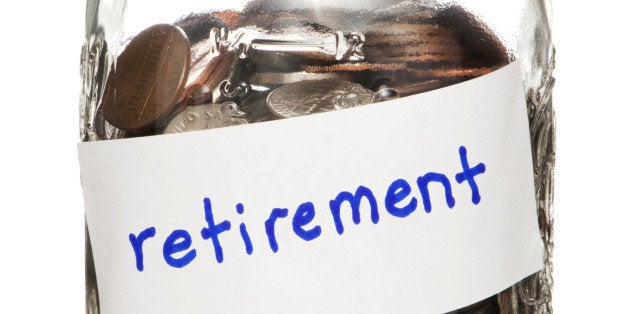
The gender wage gap: it's a figure most people are familiar with. On average, women earn only 79 percent of what men earn when comparing full-time year round workers. Although this particular figure doesn't account for differences in occupations, education, caregiving responsibilities, or a number of other differences between men and women, a gender wage gap persists even when these factors are taken into account.
But the focus on what a woman earns each year compared to her male counterparts masks a related and equally important issue: the gap in women's retirement insecurity.
To understand how the gender wage gap relates to women's retirement security, first you have to understand the drivers of the wage gap. While a portion of the gender wage gap can be attributed to discrimination, there are also other factors at play.
For example, men and women tend to get tracked into different types of jobs, and women have fewer opportunities to negotiate their salaries and advance up the ranks. Even when working full-time, women tend to work slightly fewer hours and thus earn less money than men. This "time gap", however, disappears when factoring in the unpaid hours spent on family caregiving. And women are more likely to work part time, have gaps in their work history, and have shorter job tenures, all of which are associated with family caregiving responsibilities.
All of these factors -- the gender wage gap, unstable jobs and caregiving responsibilities, compounded by discrimination -- show up as gender gap in wages and, ultimately, less retirement security for women.
Recent analysis shows that, based on the current wage gap, the average woman will earn $430,480 less than the average man over the course of a 40 year career. And the effects are even worse for women of color, with African American women losing $877,480 and Latinas experiencing losses of over $1 million. Less earnings make it more difficult for many women to save, let alone prep for what should be their golden years.
No matter which forms of savings we consider -- 401(k) plans, IRAs, or emergency savings -- women, on average, have less available to them than men. The fact that women are typically paid lower throughout their working lives only exacerbates women's economic insecurity in the future.
Unfortunately, all indications suggest that things will only get worse for coming generations of women.
The share of all working-age households that are likely to have to severely cut their spending in retirement grew to 52 percent in 2013, up from 31 percent in 1983. Single women nearing retirement are much more likely than single men to fall short in their retirement savings. Women on average have less money saved for retirement, are less likely to participate in retirement plans at work and have fewer emergency savings compared to men.
Ironically, women actually need more retirement savings than men because they tend to live longer and they face greater chances of disability in their old age than men.
As women struggle with economic adversity preparing for retirement, they get little help. Women are much less likely than men to have a traditional defined-benefit pension, and women, because they get paid less, enjoy fewer tax incentives when saving for retirement. Many women do not work for employers offering retirement benefits and are less likely than men to be eligible for retirement benefits, leaving them on their own to maneuver the complexities of retirement savings.
Once women enter retirement, many struggle with poverty. In 2012, the poverty rate for all women aged 65 or older was 11 percent. But older single women experience poverty rates at much higher levels: among women aged 65 or older, 17.1 percent of divorced women, 14.5 percent of widowed women, and 23.2 percent and never married women live in poverty. By comparison, older men had a poverty rate of just 6.6 percent in 2012.
Women's retirement insecurity in old age follows in large part from the economic insecurity and economic risks they experience throughout their working lives, because the wage gap and retirement insecurity go hand in hand. To ensure greater retirement security for most women, policymakers must address the savings needs of women in earnest.
In addition to policies to close the gender wage gap, we also must focus on creating new low-cost, low-risk retirement savings options that are simple to use, combined with new tax incentives that particularly benefit lower-income workers. Without a new policy approach to retirement savings, older women's struggles will only get worse.
Sarah Jane Glynn is Director of Women's Economic Policy at the Center for American Progress. Christian E. Weller is a Senior Fellow at the Center for American Progress and a professor of public policy at the McCormack Graduate School of Policy and Global Studies at the University of Massachusetts, Boston.